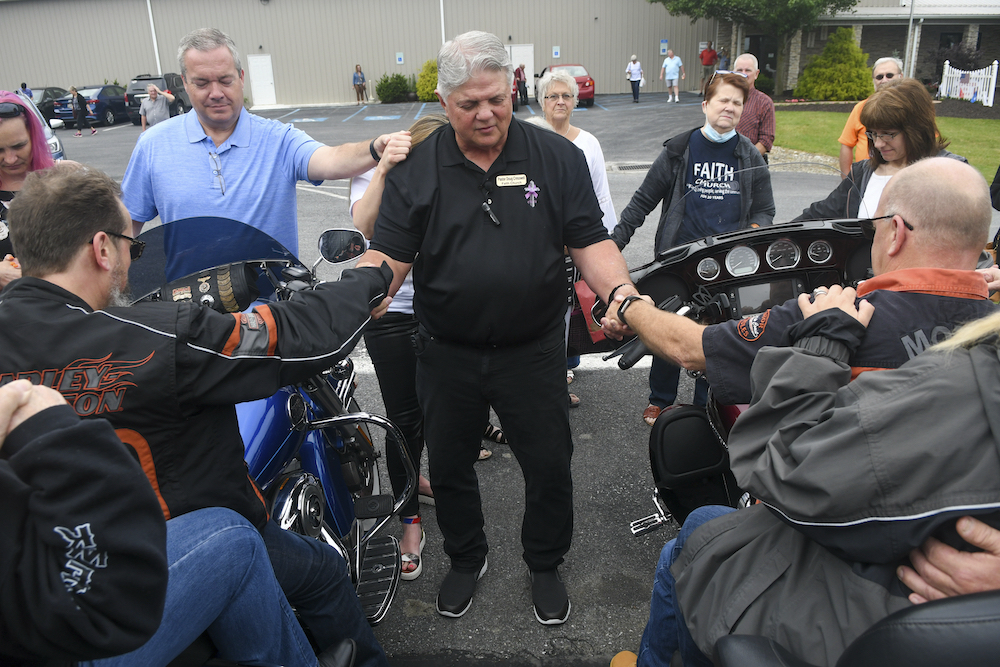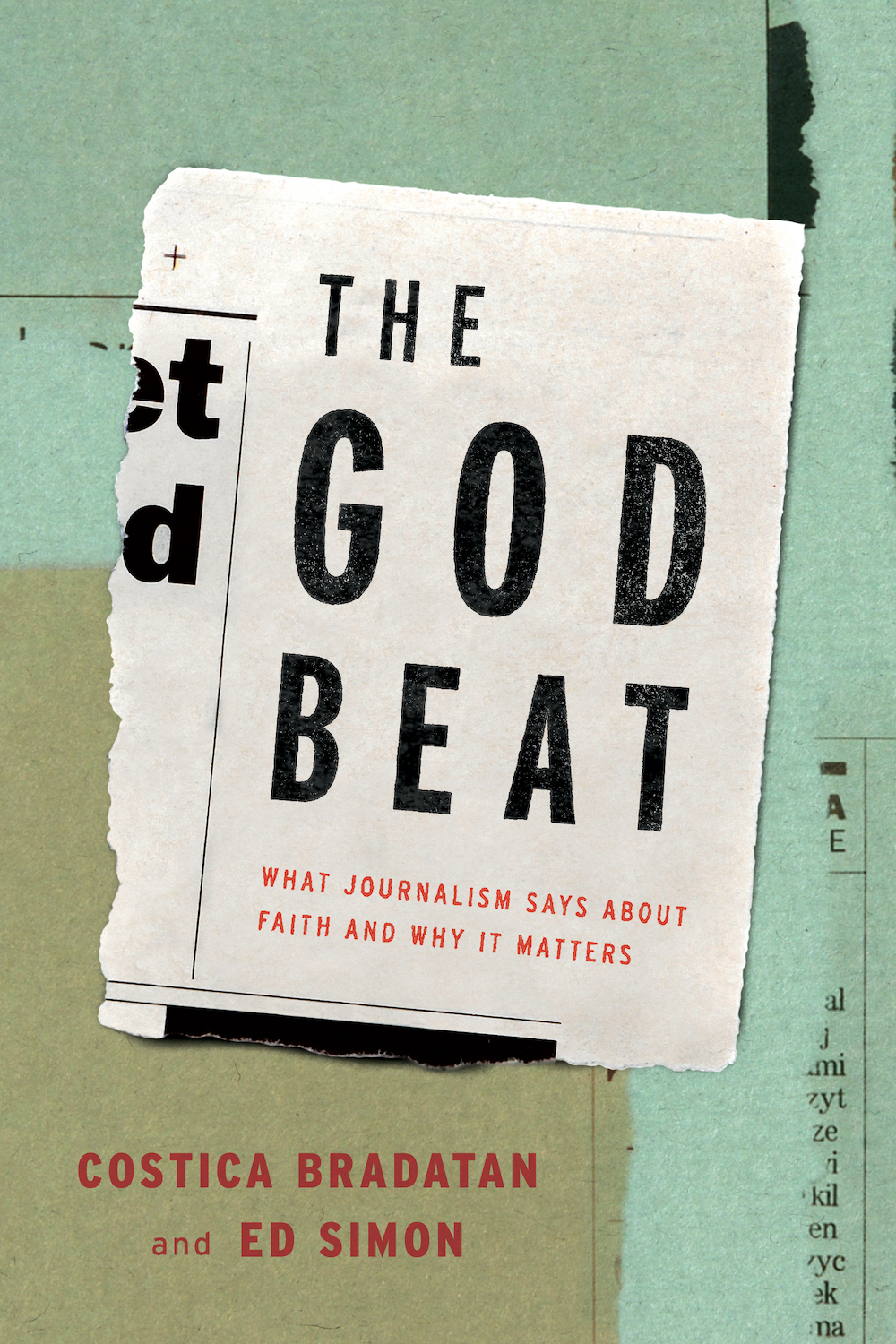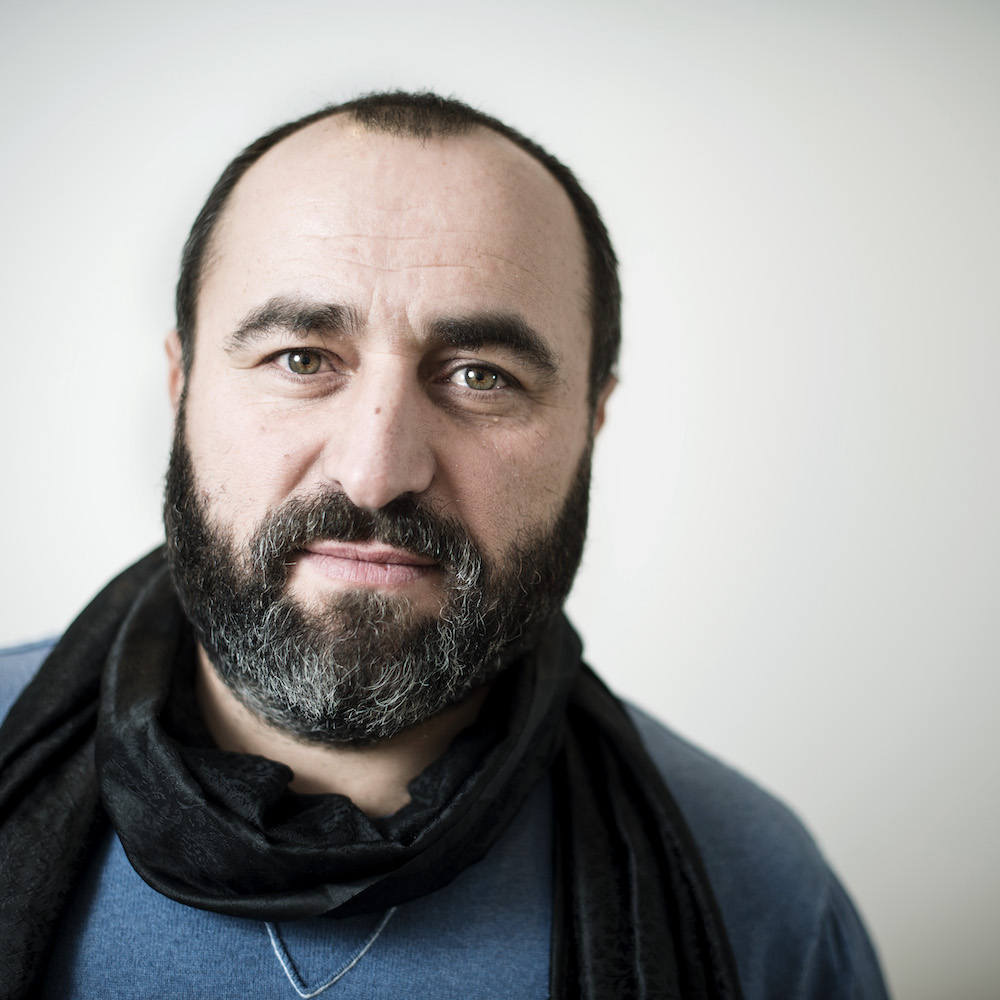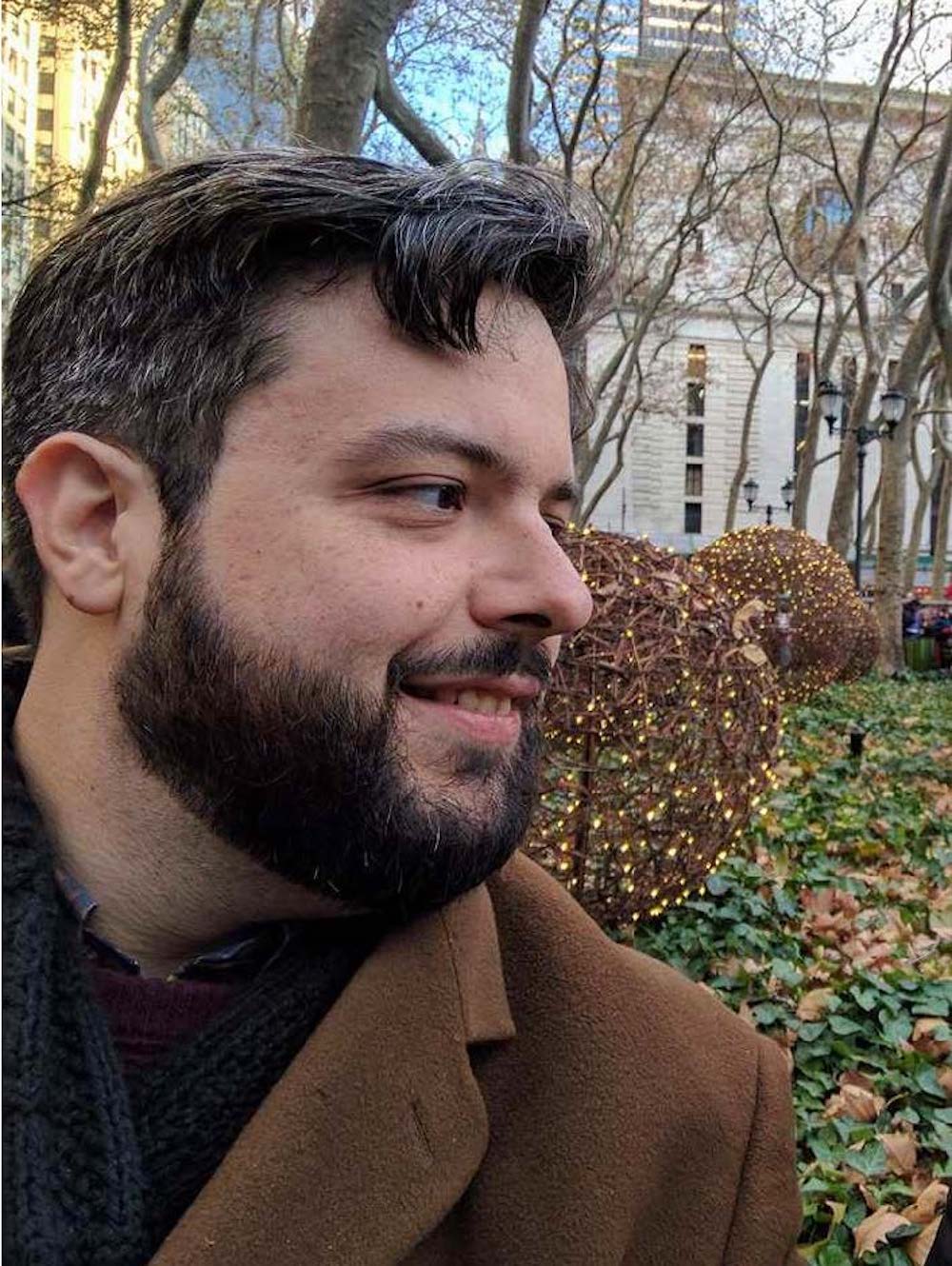
Pastor Doug Cresswell, center, holds the hands of bikers Greg Reser, of Shenandoah, Pa., left, and Jeff Gilfillan, of Schuylkill Haven, Pa., during the Blessing of the Bikers in the parking lot at Faith Church in Orwigsburg, Pa., on Sunday, June 13, 2021
In “The God Beat: What Journalism Says About Faith and Why it Matters,” dozens of religion journalists expound on the challenges of covering spirituality in a nation at once both secular and faithful. The volume, edited by Costica Bradatan and Ed Simon, interrogates the position of faith — and journalism about faith — within the social context of the U.S. Its 26 essays examine religion’s effects on politics, science and technology, and theology. In addition, its writers examine how religion journalists have become more willing to share their personal spiritual connections in the New Religion Journalism in a way that, according to Simon, “more traditional ‘God beat’ reporters wouldn’t.”
In this excerpt from the Introduction, the course of the book is mapped out for the reader. It also examines on the evolution of views that religion would weaken as a socio-political force in the world in the late 20th century and how those ideas have changed since the terror attacks of Sept. 11, 2001.

"The God Beat: What Journalism Says About Faith and Why It Matters" by Costica Braddatan and Ed Simon
For all its merits, the New Journalism had a secularism problem: it often ignored the questions of meaning and transcendence that lay at the center of the human experience. While the New Journalists revolutionized how politics, culture, and sports were covered in the media, the so-called “God beat” journalists remained much more staid in their approach, dutifully reporting the election of new popes or the goings-on at Christian colleges more than a reporter’s own interaction with their faith — or lack thereof. More subjective articles on religion hewed to the evangelical, the New Age, or the atheistic, with all positions uncomfortable exploring the ambiguity that defines the actual religious experience. Secular newspapers, even the largest and the best of them, always tended to have fewer reporters working on the God beat than on politics, culture, sports, or even the weather page. A perhaps unconscious promotion of the “secularization hypothesis”: the dubious notion that religion would become less important over time.
That was until the turn of the millennium, when the 9/11 terrorist attacks reminded secular writers and readers that religion, for good and bad, was still very much pertinent in the modern world. One of the results of this new awareness was a corollary to that experimental reporting of half a century ago: a New Religion Journalism emerging to cover issues of faith with the same literary panache as a Didion or a Talese. At the Los Angeles Review of Books (itself an occasional home for New Religion Journalists), Ed Simon defined the New Religion Journalism as being a “mode of nonfiction in which often personal questions of faith are interrogated against the backdrop of wider issues, where authors frequently insert themselves into the story in a manner in which more traditional ‘God beat’ reporters wouldn’t, and most importantly, where the theism/atheism binary is questioned and the full ambiguity and ambivalence of belief can be displayed.”
If this new movement has a place of birth, it’s probably Jeff Sharlet and Peter Manseau’s provocatively named site, Killing the Buddha. Drawing its name from a Zen koan on the need to disavow ourselves of idols in the search for truth, Killing the Buddha promoted itself as a religion site for people made uncomfortable by church, publishing neither religious apologetics nor secular diatribe but a new type of writing that was thriving in the borderlands between faith and doubt.
Such writing has covered a wide range of issues, from politics (the puzzling support of some evangelical Christians for an overtly immoral president or the emergence of important dissenting evangelical voices) to liberal social activism (the popularity of a pope who is regularly seen as “progressive” or to the increasing acceptance of homosexuality in mainstream denominations) to science and bioethics. When Kelly Baker writes on the role of racism in the institutional church, Ann Neumann on palliative medical care and faith, Patrick Blanchfield on religion and firearms, Nick Ripatrazone on Catholicism and literature, Jeff Kripal on New Age and paranormal faith, and Meghan O’Gieblyn on evangelical identity, to give just a handful of examples, all use tropes and techniques associated with the New Journalism but applied to issues of faith. Even as mainstream journalism is besieged, both politically and economically, editors have realized the crucial role that religion reporting plays, as evidenced, for instance, by the Lilly Endowment’s new grant program in support of hiring new religion reporters at the Religion News Service, the Conversation, and the Associated Press. Even though the phenomenon has attracted the attention of perceptive analysts and scholars, it has remained relatively neglected and understudied. Hopefully this anthology will help address this lacuna.
This collection of essays is neither exhaustive nor very systematic. Indeed, it is limited to the English-speaking world, with a focus on the US journalistic scene. The selection is meant to serve as a sampler — to make people want to know more. Without a doubt, the twenty-six pieces gathered here cannot do justice to an increasingly rich, textured, and diverse journalistic literature that has religion at its center. Yet The God Beat does bring together some of the finest and most representative examples of this emerging genre—from sites that focus on religion, such as Killing the Buddha, Religion Dispatches, and the Revealer, to generalist venues that are conversant with issues of religion, such as Aeon and the Los Angeles Review of Books.
If journalism involves the use of the storyteller’s tools (narrative, dramatization, characterization, and suchlike), then it should be interpreted as such. Indeed, at the heart of The God Beat lies the conceit that since any good journalism seeks to tell a story, we should expect a narrative of conflict. Directly or indirectly, explicitly or implicitly, then, an agon is to be found at the core of any good piece of journalism — and the New Journalism in particular. Giving what is due to literary conventions, we’ve structured our anthology around essays that concern a dialectic of personal, political, scientific, and theological conflict. In other words, you will find here stories involving some sort of disjunction within the self, within society, within the natural world, and within our definitions of the divine. In each of these conflicts there are intimations of the sacred and the profane, the holy and the heretical, the blessed and the blasphemous.


